Indoor Growing/GardeningIdeas and Tips:
The following information is about Indoor Growing / Gardening ideas and tips.
Introduction to Indoor Growing / Gardening
A beautiful indoor garden is could be the best gift for your house. Indoor gardens add beauty to the house and improve the quality of air inside the house. Greenery inside the house has the power to relieve your body and mind from stress.
The art of growing plants indoors is called indoor growing/gardening. Indoors can be an enclosed space, apartment, office, or and public place like malls, hotels, etc. An indoor garden is a good idea to design the interiors of the house with greens and flowers. Indoor growing/gardening can also be the best option if you don’t have enough space for a garden around the house or the outside climate doesn’t suit growing plants. Growing plants need no reason, whether it is indoor or outdoor.
Indoor plants are generally grown in containers, indoor growing/gardening with the right tools and information can produce fruits and flowers around the year. Indoor growing/gardening keeps the plants safe from temperature fluctuation. Indoor growing/gardening doesn’t require more financial assistance and basic requirement are a light source, soil, fertilizers, with good water supply. The source of light can be artificial or choose a sunny location within your house. If you want to grow any commercial crops then greenhouse indoor growing/ gardening is the best choice.
How to Start an Indoor Growing / Gardening
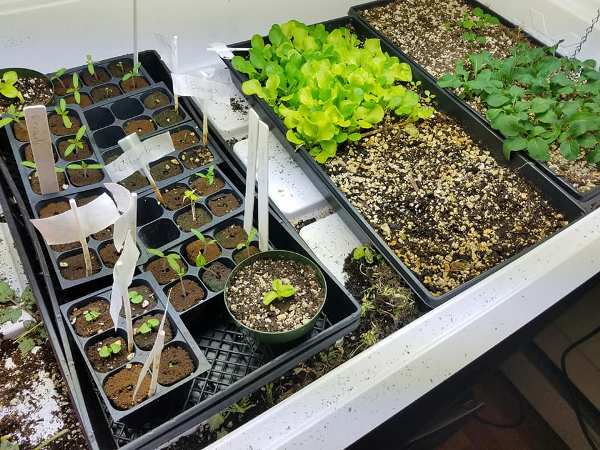
The first and foremost thing is you should choose a good indoor garden design, and then select an appropriate place according to your design. Don’t try to grow all the plants at a time, start with a minimum number.
Selecting a Space for Indoor Growing / Gardening
- Space for indoor growing /gardening depends on our wish, you can start in a large or small area.
- A successful full indoor growing/gardening depends on selecting the right place in the house for placing plant containers or stands.
- The selection of plants depends on the space you dedicate for indoor growing/ gardening.
- Select the place where you get a good amount of natural light and air circulation.
- Choose the room with windows, facing east and west. As the plants grown indoors needs some sunlight to thrive.
- Don’t choose the rooms that have a low-temperature level with low light and air, cold kills the growth of the plant.
- Some variety of plants need a table set up or a bench for placing containers. The area under the benches or tables should be covered with a tile or wooden sheet to hold the water drops without spreading or can just place a trap under the tables.
- The shelves are used to grow plants indoors, but if you are using shelves, make sure that light reaches the shelves fully. If not, use grows lights.
Types of Indoor Growing / Gardening
- There are two styles of indoor growing/gardening- container indoor growing/gardening and hydroponic indoor growing/gardening. Container indoor needs container to grow, with good quality gardening or potting soil. In the case of hydroponic indoor growing/gardening, it is a special type, it uses nutrient solution as a growing medium for plants instead of normal soil.
- Container gardening is always the best option, as you are more used to it. Containers are flexible and can grow any type of plant in containers.
- The hydroponic container is the latest technique, and it is a good choice if planning to grow many plants in a small area.
Hydroponic Indoor Growing / Gardening
Hydroponics is a method of gardening without soil, in this system growing medium provides necessary nutrients to roots directly without giving them any stress in searching for nutrients. The plants grow very fast in hydroponic farming, as they get easy access to water and food.
Container Indoor Growing / Gardening
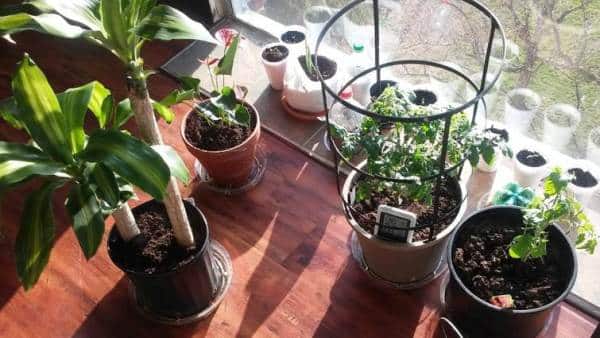
Plants grow well in the containers with the right potting soil. The size of the container will play a key role in plant growth. The container should have a good draining system. Many varieties of designed containers and container holders/stands are available for indoor growing/gardening.
- Hanging Planters: Hanging planters are a good idea, you can just suspend the plants wherever you want. Hanging planters can be moved to sunlight if needed, just need to fix some nails to our walls. They don’t take any floor place. Hanging planter comes in many designs and attractive colors. Buy them at nearby nurseries or at any garden center. They are available all online also.
- Sub-Irrigated planters: Sub irrigated planters have internal water storage. These variety containers don’t need regular watering, the best option if you are a traveler or don’t enough time to spend daily.
- Plant Stands: Designed planters will increase the beauty of the house; they can save your place as well. Plant stands are easy to fit in any corner of the house. Man-designed varieties are available online or in markets.
- Terrarium: terrarium is a glass container containing soil and plants. Can be opened or maintenance to access plants. Terraria containers can be opened rather than sealed. A closed terrarium provides a unique environment for plant growth, plant get heat and light from transparent walls. Terrariums come in all shapes and sizes and best decorative items.
- Window Boxes: Window boxes are the best option to grow small plants and herbs. Plants that need direct sunlight can be in window boxes.
- There are many types of containers available for container gardening. Choose the containers made of wood/clay /terracotta/plastic containers.
- And don’t forget to buy saucers along with containers as the dripping of water on the floors.
Read this: Terrace Gardening.
Soil for Indoor Growing / Gardening
- Gardening soil is not preferred, as the normal gardening soil contains bacteria and fungus that increase the chance of pests and diseases.
- Potting soil should be modified as per planting needs, some plants like cactus need well-drained soil, for those plants, mix one-third of sand to the potting soil. For seedling use a soilless potting mix that is loose and moisture retentive. The potting mix should be tailored as per the plant.
- Soilless potting mix can hold moisture for a long time, but the plants grown in a soilless medium needs a constant supply of fertilizer. Plants grown in the soilless potting mix are disease and pest-free as the potting mix is fully sterilized. But the main disadvantage of the soilless potting mix is it dries quickly constant watering is needed.
- Rich organic matter in the soil will hold moisture for long periods. So, choose the potting mix rich in organic matter, or you can add organic components yourself. Add leaf mold, sterilized compost, or fertile garden soil rich in organic matter. Potting soil rich in organic matter increases the microorganisms and nutrients.
- Potting soil should be light so that air and light penetrated the roots of the plants. the roots of the plant need oxygen for healthy growth, so potting soil should have plenty of perlites, vermiculite, and sharp sand. This composition of potting soil will drain water easily and penetrates a good amount of air inside the soil.
- A good quality potting mix is filled with peat moss, vermiculite, and perlite.
- Commercial potting soil: All-purpose potting soil best for indoor growing/gardening. A professional potting mix will be designed with a good proportion of nutrients and minerals and balanced pH levels that supports the good growth of plants.
- Perlite soil: Perlite-based potting soil is made of small volcanic balls that increase airflow and drainage. This type of potting soil is best for indoor plants.
- Self-Watering potting Mix: this potting soil is best for self-watering, sub-irrigated planters. This potting mix is very light and wicks moisture to the roots of the plants to keep them hydrated and healthy.
- All the types of potting mixes are available in the nurseries and garden centers. you can get from online stores.
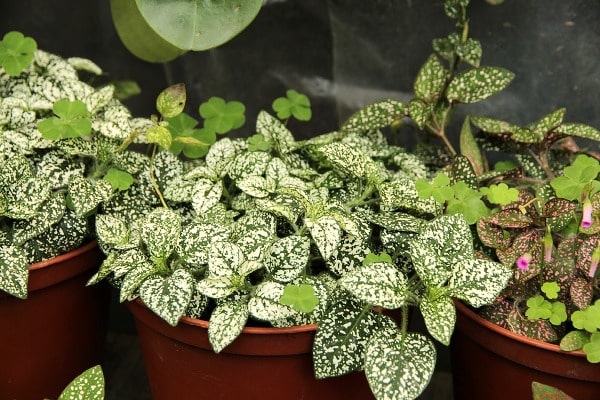
Temperature for Indoor Growing / Gardening
Temperature is the basic need for the temperature to grow healthy. In outdoor plants suffers temperature fluctuations, indoor plants will have similar temperature throughout their life span. Ideal temperatures for plant growth are 18°C to 21°C. the temperature fluctuations up to 4 to 5 C either way will not affect the plant. The plants affected by heat will turn weak and pale. The plant affected by too cold will have yellow leaves. Blooming will be very poor in poor temperature.
Things to be considered:
- Keep an eye on the temperature swings. Indoor plants don’t get many temperature swings. In case of temperature swings, most of the plants are affected and stop growing.
- take good care of plants in case of extreme summer or winters.
How to Control Temperatures in Indoor Growing / Gardening?
There are many tools to control the temperature in growing rooms. One of the easiest ways is to use manual-operated vents or windows to provide necessary temperature levels and humidity using natural light and ambient CO2.
Some advanced techniques are implemented, that provide an ideal growing environment with controlled temperature. Machines used to control climate automatically are heaters, air-conditioning units, humidifiers, air movement fans, CO2 enrichment equipment, root zone electronic moisture meters and computer-integrated controllers and sensors, etc.
Use the climate controllers based on our budgets and the size of the growing area.
Humidity Requirement in Indoor Growing / Gardening
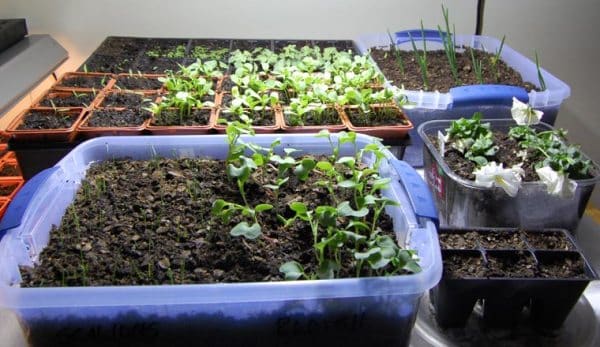
Like water and light, plants need water vapor in the air called humidity to thrive. The pores of the leaves through which the plant breathe lose their moisture when the air has low humidity levels. And the plant always cannot take necessary water from the roots this leads the stress in plants.
Plants grow well if air surrounded has 50% of humidity. Even 30 to 40% humidity is enough for the growth of the plant. the leaves drop off in case of low humidity levels. In winter, humidity levels will be 10 to 20% lower.
- Misting plants can help to retain humidity, but it stays for an hour or so.
- Clustering two or more plants, each plan can provide the necessary humidity to its neighbors.
- A cool vapor humidifier is a better solution.
- Or placing a gravel-filled tray with ¼ water under the plant container will maintain the humidity level in the air around the plants.
Water Requirement for Indoor Growing / Gardening
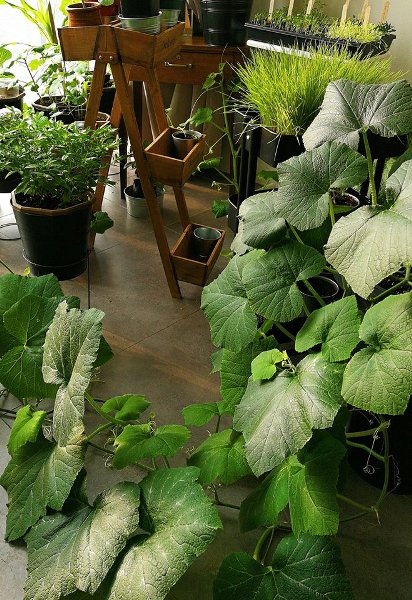
Plants need water that true, but many plants indoor plants die due to overwatering. Don’t be excited about watering your plants, follow a regular watering schedule. Plants need more water only during peak summers and dry weather. And they don’t need water cool and cloud weathers. Water the plants checking the moisture levels of the soil, water if the soil is dry to a depth of ½ to 1 inch.
Rules for watering indoor plants:
- Water regularly: The container shouldn’t get dry out in a plant life cycle. Water the plant constantly maintains moisture levels.
- Water deeply: How much water does a plant need? Add water to plants till the water dips you from the draining holes. This process gives enough water to the roots of the plant. If the saucer under the container is filled with water, then empty it. Improper levels of watering can make the root shallow. Water the plant deeply once a week and give sprinkles daily.
- Overwatering: Overwatering drains out both the water and oxygen from the soil. Overwatering also leads to waterlogging in the soil, which leads to root rot. To avoid overwatering, check the moisture levels before watering. Waterlogging can be solved by placing a layer of small stones or cracked pottery at the bottom of the container.
- Water according to the season: water the plants as per the season, plants need water according to the seasons. Plants need more water in summer than in fall. If you have air conditioning provision, water is not needed often.
Nutrient Requirements for Indoor Growing / Gardening
- Indoor plants need require more feed. Feed the indoor plants with mild slow-release fertilizer and liquid fertilizers.
- Water the plants before fertilizing, water plants thoroughly, and apply the fertilizer.
- Use a balanced 10-10-10 NPK fertilizer once a month for indoor plants.
- It is recommended to feed the plants with some organic fertilizers like liquid seaweed, fish emulsion, or a biostimulant to provide plants with trace nutrients.
- Feeding plants with natural composts or tea composts will provide the necessary nutrients.
- Usage of fertilizer can build up the salts in the soil, clear the salt drench the soil with clean water, and then water again. This process flushes away the salts out of the soil. This clearing can be done once in 6 months.
- Topdressing the plants with a layer of organic mulch or natural compost like fruit compost or eggshell provides plants necessary nutrients and keeps the soil cool.
Lighting Requirement for Indoor Growing / Gardening
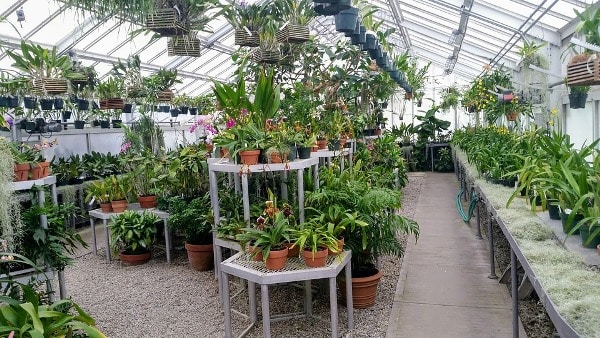
Plants need light for proper growth, particularly in indoor growing/gardens where no natural light not fully available. Most of the plants grow best when they receive 12 to 16 hours of light per day. In summer seasons light from windows could be sufficient, but in the winter season, you should provide supplemental lighting.
Growing Lights for Indoor Growing / Gardening: Under a set of grow lights can grow many indoor plants like houseplants, orchids, fruits, herbs, and vegetable crops. Grow lights are the best choice for seed germination.
Both LED and Fluorescent bulbs produce full-spectrum light as sunlight that provides cool and warm light that replicates the natural sunlight. But LED bulbs consume less electricity and have more life span than fluorescent lights.
There are many different grow lights available in the market. How do select the best one?
- Incandescent growing lights: these are low-expensive growing lights available in all the hardware shops. These can give sufficient light to indoor plants.
- Fluorescent growing lights: these growing lights are better choices than incandescent lights. These lights are mainly used for plants like herbs, as they don’t need more light to grow.
- Compact Fluorescent Lighting Systems: these plants provide bright and efficient light for all types of plants. These lights produce less heat, it can be placed near the plants.
- High-Intensity Discharge Bulbs: HID bulbs are the most efficient growing lights; one light can produce enough light for all medium-sized indoor gardens. HID bulbs are more expensive.
- High-Pressure Sodium Bulbs: HPS growing bulbs produce orange-colored lights, suitable for flowering plants.
- Metal Halide Bulbs: MH growing lights produce blue-white color light, promote the growth of foliage, and keeps plants compact. Use these bulbs during the growing period and during the blooming period shift to HIP lights.
Pests and Diseases of Indoor Growing / Gardening
Indoor gardens are mainly affected by some common pests like:
- Aphids: Aphids are plant lies, aphids are in different colors like gray, black, and green. Aphids spread easily and make plants weak.
- Spider Mites: these are tiny insect spreads easily between the plants. Spider mites look like sand grains under the leaves of the plants.
- Thrips: These insects form some small black spots under the leaves, leaves affected by thrips turn yellow.
- Whiteflies: these are small white moths, lay white eggs on the leaves. These insects spread one plant to another plant easily.
Diseases in Indoor Growing / Gardening:
- Indoor plants are affected by diseases like downy mildew, powdery mildew, gray mold, white mold, and root rot. These diseases are affected due to bacterial and fungal infections.
Pests and Disease Control Measure Tips in Indoor Growing / Gardening
- Cleanliness is the main key to control pests and diseases.
- Tools and containers used for indoor growing/gardening should be washed before using.
- Use gloves for gardening work.
- Select diseases resistant plants and seeds for indoor growing/gardening.
- Maintain the pH levels of the soil.
- Common pests can be prevented by spraying a hard stream of water on the affected areas.
- Good air circulation, adequate humidity levels, and temperatures keep plants healthy and away from disease.
- Prune the diseased and dead leaves immediately. Remove the fallen leaves from the plant surroundings.
- Used some natural or organic pesticides like neem oil or organic spray to control common pests and diseases.
Plants Suitable for Indoor Growing / Gardening
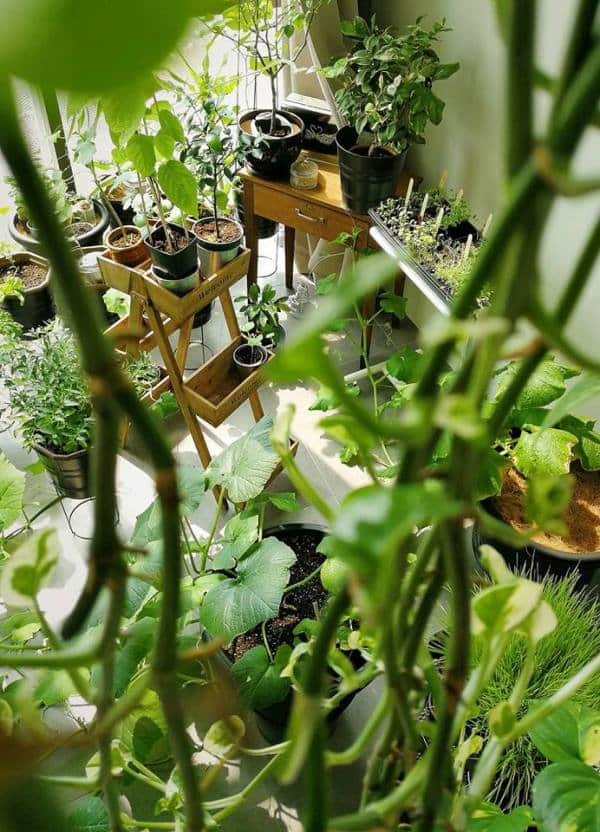
Almost all the plants are grown indoors. Choose the right plants for Indoor Growing / Gardening: some plants don’t grow together, so make a complete study about the companionship of plants and then select what to plant.
- Vegetables in Indoors: Bell Peppers, Salad Greens, Onions, Kale, Chard, Tomatoes, and Beans.
- Herbs in Indoor Gardens: Basil, Parsley, Oregano, Lavender, Cilantro, Rosemary, Chives, and catmint.
- Flowers in Indoors: Geranium, Pans, Zinnia, Roses, Candytuft, Alyssum, Marigold, petunia, Begonia, and shasta daisy.
- Fruits in Indoors: Strawberries, Blueberries, and Dwarf Varieties of Apples, Lemons, and Oranges.
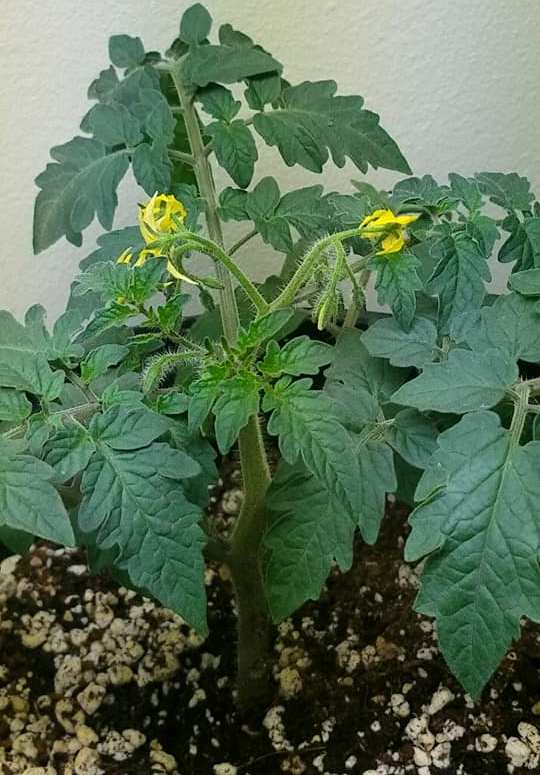
Tips and Ideas for Indoor Growing / Gardening
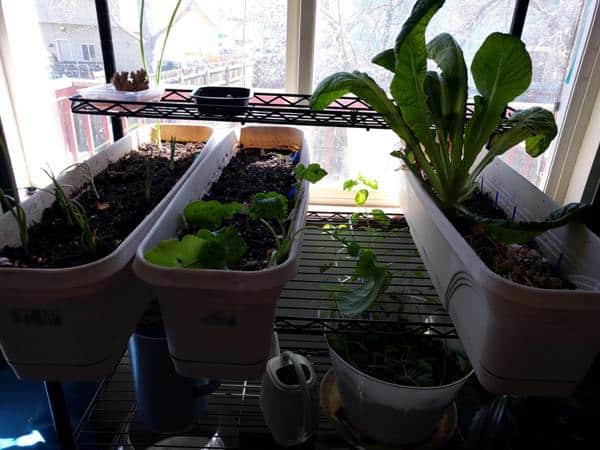
- Check the oxygen and carbon dioxide supply for your plants.
- Keep the plants constantly in the same place for long periods. Don’t change their place regularly.
- Check whether the plant receives adequate light, in case of insufficient light, open the windows and move the container close to the windows or on the grow lights.
- Make sure that light reaches to plant completely, not just one side.
- The humidifier is the better option than misting, misting will work just for an hour.
- Feed the plants with tea composts, tea provides necessary nutrients for plant growth.
- Give a shower to the leaves of the plant once a week.
- Pruning should be done once a week.
- Feed plants with eggshells, leftover drinking soda are the best minerals feed for indoor plants. Minerals in soda help green plants grow.
- Watering can be done using ice cubes, place ice cubes around the soil. Ice cubes will melt slowly and release the water gradually and evenly into the soil.
Advantages and Disadvantages for Indoor Growing / Gardening
Advantages of Indoor Growing/Gardening:
- In indoor growing/gardening, you can grow a wide variety of plants.
- Indoor plants can purify the toxins in the air around us.
- Indoor gardens are the best way to decorate your house.
- Indoor plants keep the house temperature cool by increasing humidity levels.
- Lighting controlling is easy in indoor growing/gardening.
- Plants in indoor grown in a quality growing medium, so they are free from diseases.
Disadvantages of Indoor Growing / Gardening:
- Large and big are not suitable for indoor growing/gardening.
- Maintaining the moisture levels in the soil is a bit tough job in indoor growing/ gardening.
- Fertilizing accumulation in soils can harm indoor plants.
- Maintain humidity levels is a hard job, need some equipment to maintain moisture levels.
- Going on vacation is a bit questionable.
In case if you are interested in this: How To Grow Organic Lettuce.
- Economical Aquaculture: A Guide to Low-Budget Fish Farming
- 15 Common Planting Errors That Can Doom Your Fruit Trees
- How to Make Houseplants Bushy: Effective Tips and Ideas
- Innovative Strategies for Boosting Coconut Pollination and Yield
- Pollination Strategies for Maximum Pumpkin Yield
- The Complete Guide to Chicken Fattening: Strategies for Maximum Growth
- Natural Solutions for Tulip Problems: 100% Effective Remedies for Leaf and Bulb-Related Issues
- Revolutionizing Citrus Preservation: Towards a Healthier, Greener Future
- Natural Solutions for Peony Leaf and Flower Problems: 100% Effective Remedies
- Maximizing Profits with Avocado Contract Farming in India: A Comprehensive Guide
- Natural Solutions for Hydrangea Problems: 100% Effective Remedies for Leaf and Flowers
- The Ultimate Guide to Choosing the Perfect Foliage Friend: Bringing Life Indoors
- From Sunlight to Sustainability: 15 Ways to Use Solar Technology in Agriculture
- The Ultimate Guide to Dong Tao Chicken: Exploring from History to Raising
- The Eco-Friendly Makeover: How to Convert Your Unused Swimming Pool into a Fish Pond
- Mastering the Art of Delaware Chicken Farming: Essentials for Healthy Backyard Flocks
- 20 Best Homemade Fertilizers for Money Plant: DIY Recipes and Application Methods
- How to Craft a Comprehensive Free-Range Chicken Farming Business Plan
- Brighten Your Flock: Raising Easter Egger Chickens for Beauty and Bounty
- How to Optimize Your Poultry Egg Farm Business Plan with These Strategies
- Subsidy for Spirulina Cultivation: How Indian Government Schemes Encouraging Spirulina Farmers
- Ultimate Guide to Raising Dominique Chickens: Breeding, Feeding, Egg-Production, and Care
- Mastering the Art of Raising Jersey Giant Chickens: Care, Feeding, and More
- Ultimate Guide to Raising Legbar Chickens: Breeding, Farming Practices, Diet, Egg-Production
- How to Raise Welsummer Chickens: A Comprehensive Guide for Beginners
- How to Protect Indoor Plants in Winter: A Comprehensive Guide
- Ultimate Guide to Grow Bag Gardening: Tips, Tricks, and Planting Ideas for Urban Gardeners